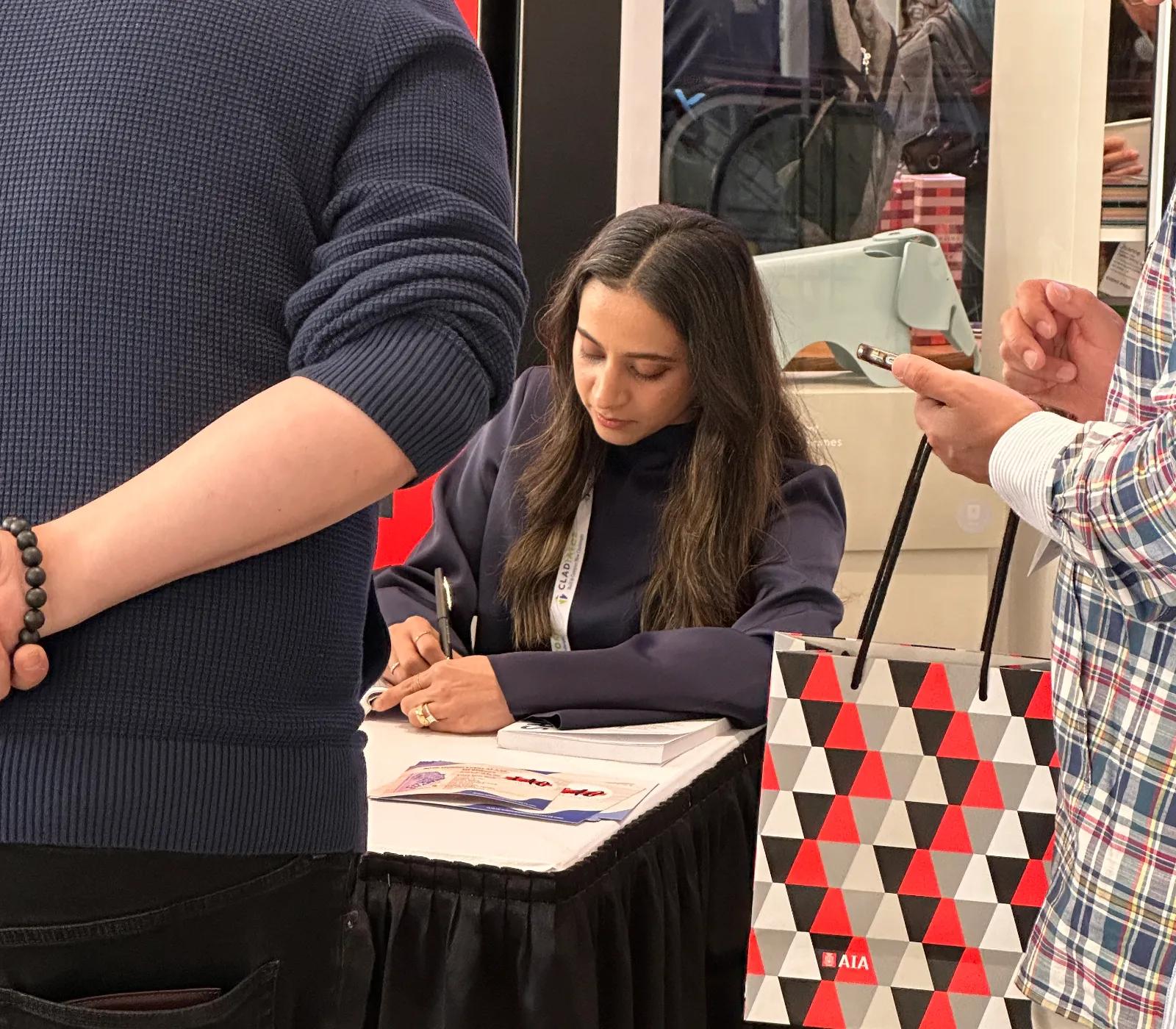We recently caught up with Apurva Purandare, a recently licensed architect working at Gensler’s Los Angeles office. Despite facing various challenges during her career transition from India to the U.S., Apurva shares how she is leveraging her experience to build up those in her community and advocate for a more equitable and inclusive profession.
Please tell us a bit about yourself and what drew you to architecture in the first place.
Born and raised in Mumbai, I first came to the U.S. in 2014 to pursue my master’s degree in architecture and ended up making it my home. My passion for architecture developed gradually after I discovered the field while researching universities back in India. I was drawn to it because it combines design, art, and engineering. Each new project begins with an open-ended question, and the architect's creativity shapes the solution. I find the work intellectually engaging and ideal for my talents.
Outside of work, some of my favorite ways to relax include: watching the sunset, visiting an art gallery, and hiking in the mountains with my husband.
What was it like navigating the licensure process in the U.S. after already being licensed in India?
Though moving my architecture career to the United States seemed like a lateral transition at first, I soon realized there were many aspects that required starting over from scratch. One major challenge was navigating the licensure process, which varies widely between countries. After researching my state's specific requirements, I explored avenues to gain reciprocity or credit for my licensure and experience in India. However, with the counsel of my university's international center advisor, I came to accept that the most viable path was to re-document my experience and wait for eligibility from my state. While disheartening, this process gave me the motivation to persist. In total, it took me eight years after completing my master's degree and eleven years from earning my original license in India before I could officially call myself an architect in the U.S.
Though my journey had challenges, each generation makes the road a bit smoother for the next.
I hope the recent U.S.-U.K. reciprocity agreement paves the way for more international agreements in the future, making it easier for architects to transition between countries and build upon their expertise rather than repeating steps.

In between working at architecture firms in India and the United States, you took a job researching informal settlements in Mumbai for an organization invested in participatory urban planning—tell us more about this experience and how it relates to your approach to your work today.
In 2013, I was exploring a major move from India to the U.S. During this time, I volunteered at Urbz, an action and research collective applying participatory planning, design, and governance to urban architecture projects. Collaborating with diverse experts like architects, anthropologists, and local stakeholders opened my eyes. Previously, I had only worked alongside fellow architects. My biggest takeaway was learning there are manifold solutions to any design problem.
The exposure to varied perspectives impacted my ideology and adaptability. I became more open-minded, realizing my way is not the sole approach.
This volunteer experience taught me how to listen, synthesize contrasting ideas, and evolve solutions collaboratively. My time at Urbz instilled a holistic creative process that has stuck with me since. I emerged more primed to welcome diverse voices and harness our collective potential.
Can you share about your involvement with the organization, the Immigrant Architect Coalition, and your experience co-authoring the book, City Shapers?
In 2020, while studying for my architecture registration exams, I discovered the Immigrant Architect’s Coalition (IAC), an organization raising awareness of the unique obstacles faced by immigrants pursuing licensure in the U.S. I immediately reached out to a founder I knew. At the time, they had just started a blog with career guides, and I contributed an article to it. Soon after, I was invited to co-author the book—City Shapers—which shares 24 immigrants' experiences as firm owners, American Institute of Architects (AIA) leaders, and entrepreneurs.
This impactful publication was a big first step toward IAC's mission to provide resources and community for international architects. Proceeds will fund a scholarship easing costs associated with the U.S. licensing process. My involvement with these powerful leaders boosted my advocacy and provided a channel to challenge industry biases. I can help level the playing field for other immigrant architects through IAC's work. This community has positively shaped my mission and given me a platform to pave the way for an inclusive future in our industry.

What advice do you have for other immigrants and international architects looking to become architects in the U.S.?
As an architect establishing your career in a new country, it is vital to advocate for yourself while staying grounded in your core values. Do not let yourself or your unique talents be diminished—you have much to contribute. Yet, you should also remain open-minded to embracing new professional norms. Seek to enrich projects with your global perspective rather than forcing prior methods. Though the path may require repeating steps to gain local licensure, do not lose motivation. Be willing to start over to build expertise that weaves your roots with an evolving identity. Most importantly, actively build community through networks of mentors, colleagues, and clients who appreciate your diversity. Finding support and belonging will help anchor you through challenges on the road ahead. Stay resilient, flexible, and true to yourself.
Want to read more stories like Apurva's? Check out NCARB's Architect Spotlight series.
